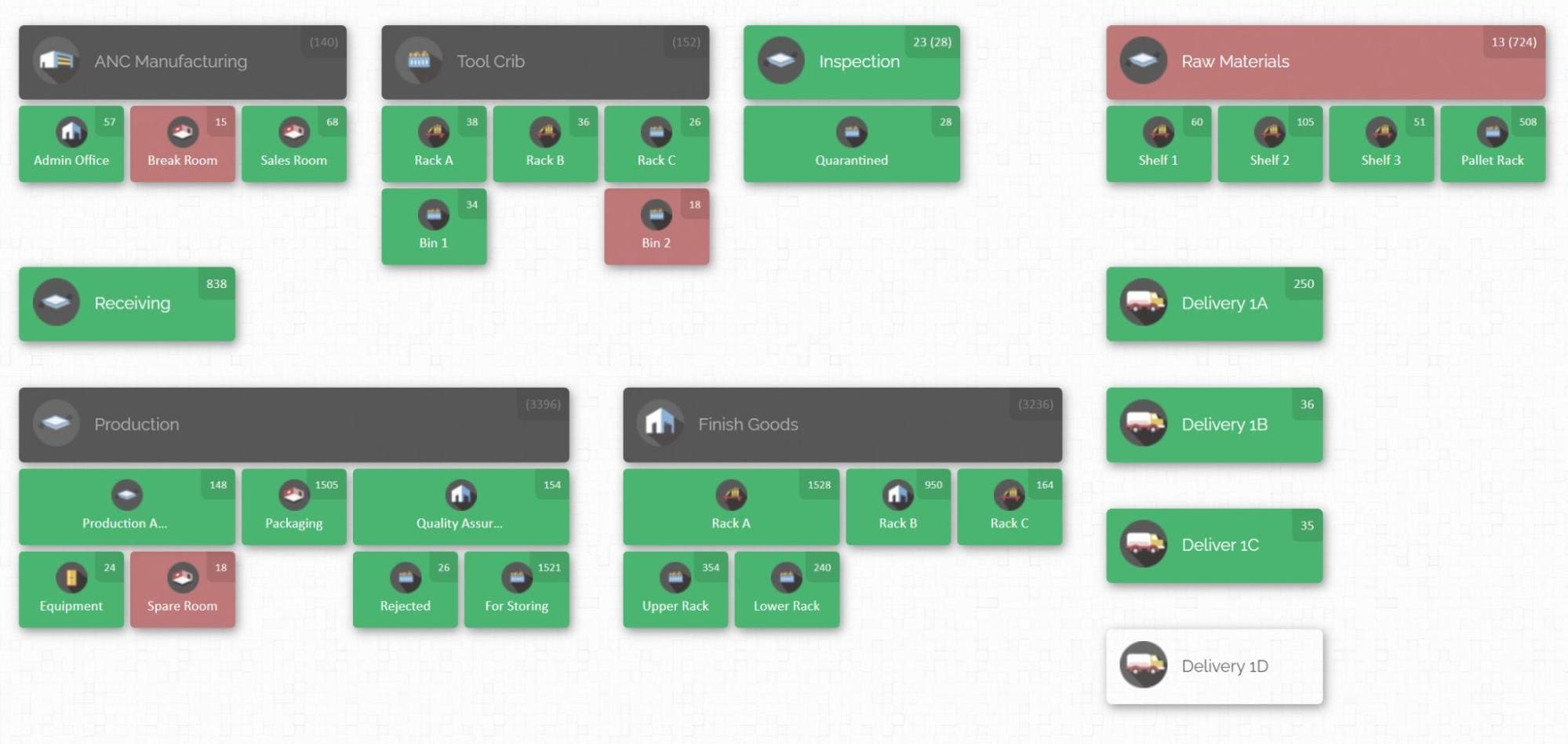Innovative Features to Improve Inventory Tracking and Control
This is a guest post from the CyberStockroom team.
In today’s fast-paced business world, effective inventory management is imperative to drive success. Accurate inventory tracking and control are critical as companies work to run smoothly while satisfying consumer demands. Thankfully, new software features are improving visibility, strengthening operational control, and revolutionizing inventory processes.
The shift from traditional to modern inventory management
Conventional inventory management techniques have long depended on manual recording methods like paper logs, physical counts, and simple electronic spreadsheets. Through these systems, businesses count their inventory on a regular basis, noting locations and quantities on paper or in rudimentary spreadsheet software. Although the techniques are effective for a while, as companies expand and inventory levels rise, they soon become inefficient. Employees have to update records and guarantee correctness in a labor-intensive, time-consuming process. Manual data entry also increases the likelihood of errors occurring, which skews inventory records.
Further, the reliance on paper logs and spreadsheets hinders visibility throughout the supply chain, which results in misunderstandings regarding stock levels, order statuses, and product locations — that can cause expensive stockouts or overstocking. The lack of real-time updates also makes it challenging for businesses to react swiftly to fluctuations in demand.
The role of innovative features
Innovative features for inventory management are tackling these issues head-on and revolutionizing the field of inventory tracking and control. To improve operational efficiency, modern systems make use of cutting-edge technology like cloud computing, real-time data analytics, and automated tracking procedures, which boast advantages like:
- Automated tracking: This feature lessens the chance of human error by eliminating manual entry.
- Real-time data capabilities: This provides a complete view of inventory at all times, which supports quick, well-informed decision-making.
- Automatic alerts: Low inventory levels trigger reorder notifications to avoid stockouts.
- Inventory map: This shows companies how their inventory is organized, making it easier to locate products and enabling more efficient use of available space.
Features that enhance inventory visibility
Below, we’ve broken down the technological advancements that can refine your stock overview.
Activity history
This feature allows businesses to track the entire life cycle of an item, documenting every transaction from receipt to disposal. Key benefits include:
- Comprehensive tracking: Access detailed logs of when products were added, sold, or moved.
- Greater accountability: Increased transparency helps staff take responsibility for inventory management.
- Shrinkage reduction: Quickly identify discrepancies and implement corrective actions to minimize losses.
- Improved audits: Gain essential data for compliance and accurate financial records.
Real-time updates
Live data is crucial for effective inventory management in today’s fast-paced business landscape. Innovative systems now offer instant updates on stock levels, which enable:
- Avoidance of stockouts: Businesses can meet customer demand without interruption.
- Prevention of overstocking: Manage capital and storage space effectively by maintaining optimal inventory levels.
- Timely decision-making: Companies are empowered to act swiftly to replenish stock.
- Enhanced team communication: All team members receive the same up-to-date information, thus reducing errors.
Visual inventory mapping
Visual inventory mapping creates a graphical representation of product storage within a facility. That offers several perks:
- Simplified navigation: Employees can easily locate assets, which saves time during procedures.
- Optimized space utilization: Pinpoint overcrowded and underutilized areas to enhance organization.
- Accelerated picking processes: It takes less time to search for products and thus improves order fulfillment speeds.
- Enhanced overall efficiency: The explicit inventory layout streamlines operations.

(Manufacturing inventory demo map from CyberStockroom software)
In addition to these benefits, visual inventory mapping plays a crucial role in stock counting. The clear visual layout helps businesses conduct counts more efficiently, as employees can quickly verify the locations and quantities of products without the need for extensive manual searches. This not only speeds up the counting process but also improves accuracy, as the map helps hone in on discrepancies that might otherwise go unnoticed. Regularly scheduled inventory counts become less of a burden, which allows businesses to maintain high accuracy with minimal disruption to daily operations.
Features to improve inventory processes and product management
Other aspects, meanwhile, strengthen various procedures in your supply chain.
Bulk check-in and checkout
Modern inventory management systems often have bulk check-in and checkout capabilities, allowing users to manage products efficiently from spreadsheets. That functionality saves time and reduces errors by enabling businesses to process multiple items simultaneously rather than updating inventory one unit at a time.
Custom fields for categorization
Creating custom fields for products allows brands to tailor inventory management to their specific needs. Fields can include relevant information such as supplier details, product categories, or special handling instructions. That flexibility enhances organization and makes it easier to locate specific items in your inventory.
Integration of product images
Incorporating item images into inventory management systems can significantly enhance product identification and tracking accuracy. When staff members see photos alongside inventory data, they can quickly verify items, which reduces the likelihood of errors occurring in picking and shipping processes.
Search and review features
Advanced search capabilities in inventory management software improve product discovery and management efficiency. Users can find specific items fast by entering keywords, part numbers, or categories to facilitate smoother operations and better customer service.
Expiration date tracking
For businesses that handle perishable goods like food, pharmaceuticals, and certain chemicals, managing expiration dates isn’t merely a matter of operational efficiency but also of compliance and safety. Effective date tracking is critical for several reasons:
- Minimize waste: By staying on top of expiration, businesses can implement first-expire, first-out (FEFO) strategies, which ensure older stock is used or sold before newer inventory. This approach reduces the likelihood of products expiring while still in storage, thereby minimizing waste and financial loss.
- Ensure product quality: Goods past their expiration dates may degrade in quality and pose a risk to consumer safety and satisfaction. Proper tracking guarantees only fresh, high-quality products reach customers so your business maintains its integrity and reputation.
- Regulatory compliance: Many industries have strict regulations regarding the handling and disposal of expired products. Accurate date tracking thus helps brands adhere to those rules so they avoid legal penalties and ensure consumer safety.
- Inventory optimization: Understanding the lifespan of goods allows businesses to better forecast inventory needs, align procurement strategies with product turnover rates, and optimize storage conditions to extend item shelf life.
Automation of alerts and notifications
Manually tracking expiration dates can be cumbersome and prone to errors, especially for businesses with large inventories. Automation plays a pivotal role in enhancing the efficiency and accuracy of expiration date management through:
- Automated alerts: Modern inventory management systems are able to trigger alerts as products approach their expiration dates. You can customize these notifications based on your brand’s specific needs so relevant stakeholders are promptly informed to take action when necessary.
- Streamlined stock rotation: Automated alerts facilitate the implementation of FEFO practices by reminding staff to prioritize the use or sale of items nearing expiration. This proactive measure helps maintain optimal inventory levels and reduces the risk of unsellable stock accumulating.
- Scheduled reporting: Regularly generate reports on expiring stock to uncover valuable insights into inventory turnover rates and identify trends or recurring issues. These reports support strategic decision-making and long-term inventory planning.
- Integration into other systems: Automated expiration tracking can seamlessly integrate into other inventory management functions, such as reordering and stock replenishment. That unification helps sustain adequate inventory levels without overstocking, which further boosts operational efficiency.
Businesses should utilize comprehensive inventory management software that correctly records expiration dates for all products. It’s essential to keep inventory records up to date by promptly entering new stock and removing expired items so you maintain accuracy and support effective management. Conduct regular audits to verify expiration dates and ensure your compliance with regulations while also identifying any discrepancies.
Integration into tracking technologies
Advanced tracking technologies, such as RFID and barcode scanning, have transformed inventory management by enhancing accuracy and efficiency. Key benefits and functionalities include:
- RFID technology: This innovation uses electromagnetic fields to automatically identify and track tags attached to objects. It provides real-time data on asset location and movement, eliminating the need for manual scanning and therefore reducing the risk of human error.
- Precision and control: Both RFID and barcode scanning enable businesses to track inventory movements with greater accuracy. During inventory audits, RFID systems can quickly scan all items in a specified area, which significantly reduces the time needed for manual counting.
- Operational efficiency: Minimize disruptions to daily operations by improving the speed and accuracy of inventory audits and updates.
- Combine with visual mapping: RFID and barcode data can seamlessly integrate into visual inventory mapping systems, which provides a clear, real-time view of stock locations. That, in turn, enables optimized asset placement, improved space utilization, and streamlined workflows.
Practical implementation tips

Implementing innovative features in inventory management requires a thoughtful approach so your business can maximize the benefits of these advanced capabilities. Here are some practical tips for their successful adoption to strengthen your inventory tracking and control.
Assess your current inventory system
Before introducing new inventory management features, it’s vital to conduct a thorough evaluation of your existing systems. Begin by identifying your current inventory management processes and pinpointing any inefficiencies or challenges. Ask yourself key questions like: Do you rely heavily on manual tracking? Are there frequent discrepancies in your inventory counts? Do you lack real-time visibility into stock levels? Understanding these pain points will allow you to determine which features will provide the most value and streamline your inventory management.
Once you’ve identified your weaknesses, analyze how your existing system aligns with your business goals. Evaluate whether your current inventory tracking methods meet the demands of your operations, and consider if they can scale with your growth. This assessment is crucial in deciding which innovative features to prioritize for implementation.
Select the right features
As you explore various software solutions, consider the specific functionalities that’ll enhance your inventory management. For example, if real-time tracking is a priority for your organization, look for systems that offer automatic updates and notifications about stock levels. If you deal with perishable goods, features like expiration date tracking will be essential.
Customization options are also invaluable; as previously discussed, the creation of custom fields helps tailor your inventory management to reflect your specific operational requirements. Evaluate how each feature can integrate into your existing processes and improve overall efficiency. By shrewdly selecting which elements to adopt, you can build an inventory management system that supports a thriving business.
Training and adoption
The successful implementation of new inventory management capabilities rests on adequate training and widespread user adoption. After selecting the appropriate equipment, it’s essential to give your employees thorough training. Make sure everyone on your team knows how to realize the full potential of the new features and incorporates them into their regular tasks.
Additionally, it’s critical to establish a culture of openness that embraces change within the organization. Encourage employees to provide feedback regarding their usage of the new features, as that can pinpoint aspects you need to refine to maximize overall implementation. Make the most of your innovative inventory management capabilities and ensure they yield appreciable increases in operational accuracy and efficiency by prioritizing training and user adoption.
Wrapping up — Embrace innovation to support accurate inventory management
Manual inventory tracking places a yoke on both your resources and your business’s expansionary potential, as well as increases the likelihood of incorrect stock information due to human error. To surpass these limitations, modern technology has developed new advancements that streamline inventory management. From visual mapping to more precise tracking, you can maintain full oversight of your goods’ every movement. Ditch the spreadsheets and ease your operational burden by adopting these innovative features.
